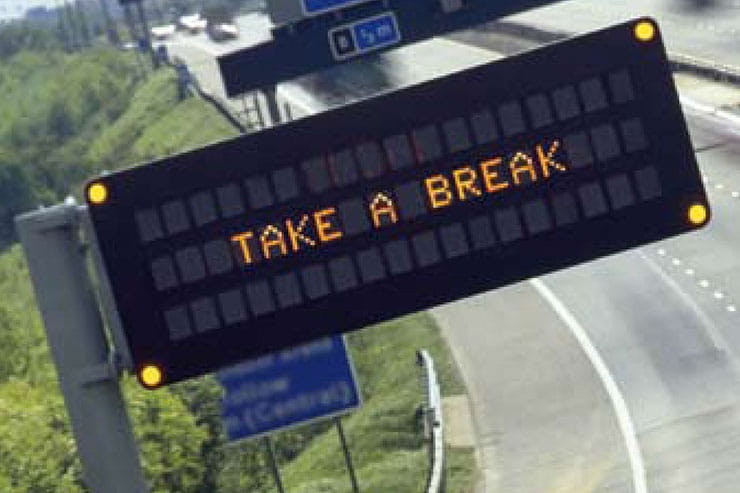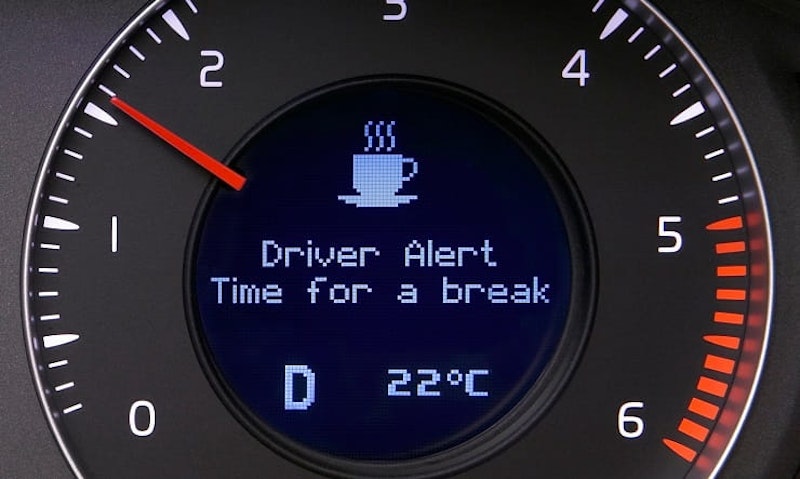New blood test can spot dangerous tired drivers
By Ben Purvis
Motorcycle Journalist
11.05.2023
Gantry matrix image (c) www.gov.uk
Drink driving is already quite rightly demonised for the danger it poses to others on the road but driving while you’re tired can be just as dangerous and a new blood test – due to be available within a couple of years – could be used to prove that people haven’t had enough sleep.
Research at Monash University in Melbourne, funded by the Australian Government Office of Road Safety, has developed a blood test that can tell how long people have been away, with 99% accuracy when it comes to identifying people who’ve been up for more than 24 hours. The university’s researchers have found five biomarkers in blood that can be used to work out how tired a person is and use those as the basis of a test that could be available within two years.
Tired driving is already recognised as a major cause of road crashes, deaths and injuries, with research showing that somebody who’s been up for 17 hours can have as much impairment to their driving as someone at with a blood-alcohol level of 50mg/100ml, which is the legal limit in many countries including Scotland. A few more hours awake, and driver performance levels drop further, to a level equivalent to a blood-alcohol level of 100mg/100ml. That means reactions worse than someone at legal limit of 80mg/100ml that would earn a driving ban in the rest of the UK.
Police statistics show that fatigue is a contributory factor in 2% of road crashes in Britain, but those accidents tend to be more serious ones, accounting for around 4% of fatalities. However, since tiredness is hard to quantify and identify, the real figures could be substantially worse. Road safety campaigners including RoSPA and Brake believe fatigue could be a factor in as many as 20% of all road crashes.
Monash University’s own research, done in 2021 using real participants undergoing tests on a closed circuit, found that drivers who’d had only three hours sleep were 10 times more likely to be involved in a crash than those with a full eight hours.
While a blood test for tired drivers is now a reality, there are still plenty of hurdles to overcome before it could be used on a mass scale. Initially, Monash University’s researchers suggest that a forensic version of the test, to be used alongside drug and alcohol testing following an accident, could be ready within two years. In five years, a more pre-emptive version could be developed with the idea of conducting regular testing, for instance on truck drivers or airline pilots. A simple, breathalyser-style roadside test is still a long way off, though.
Despite the statistics over fatigue-related crashes, it’s still likely to be controversial to introduce any sort of wide-scale testing. Laws would have to be drafted to introduce maximum tiredness levels and methods developed for people to be able to judge their own level of fatigue against those limits. It’s also significantly harder to actively vilify drowsy drivers than, for instance drink-drivers. After all, driving while tired is something that a large proportion of the population will admit to having done and anyone with a small child, or who does shift work, will be familiar with getting behind the wheel or onto a bike without as much sleeps as they’d have liked. Changing the law to create a minimum level of sleep for all road users would also mean rethinking rules for employers and industries to ensure that people never felt forced to operate a vehicle if they’re not at their sharpest.
Share on social media:

